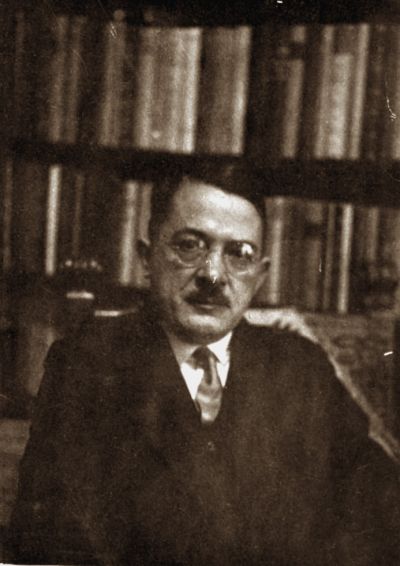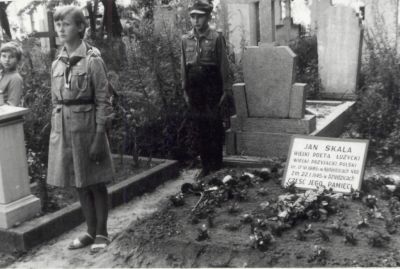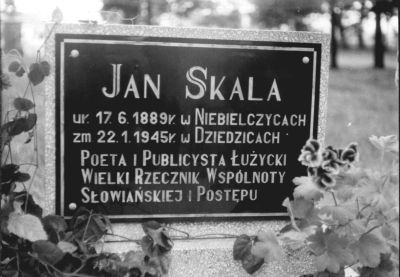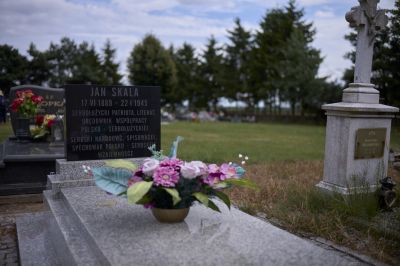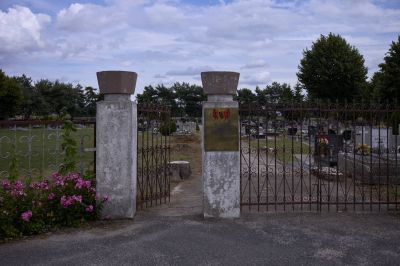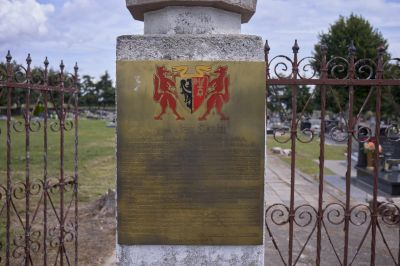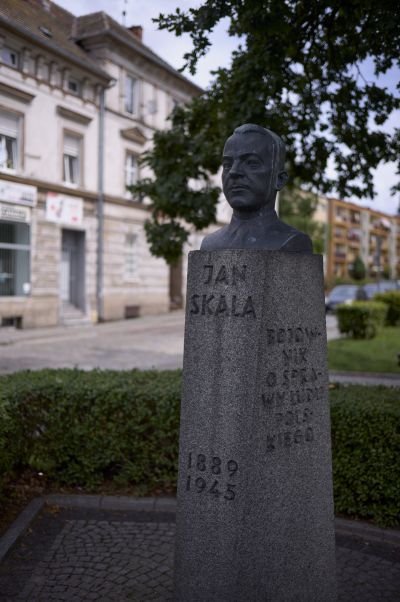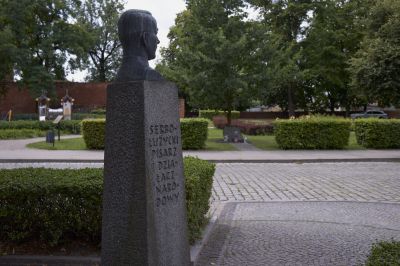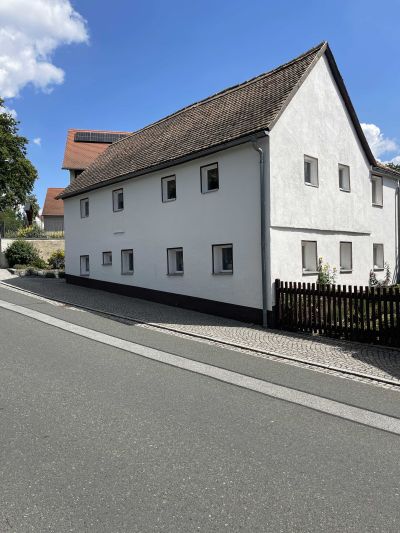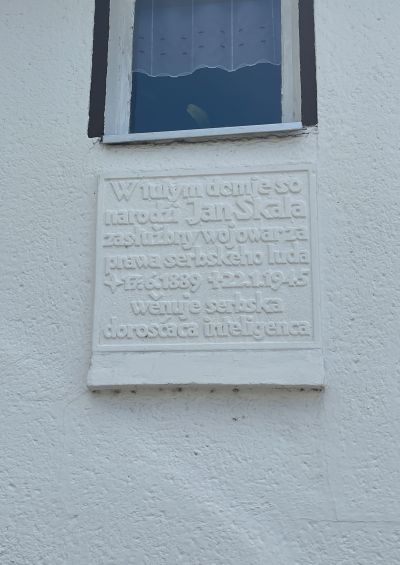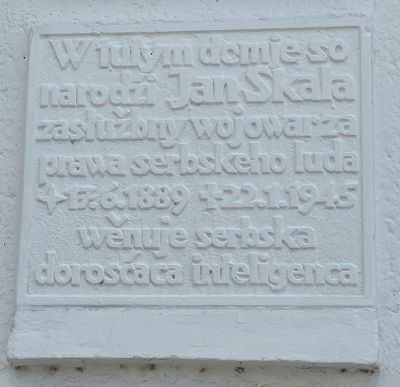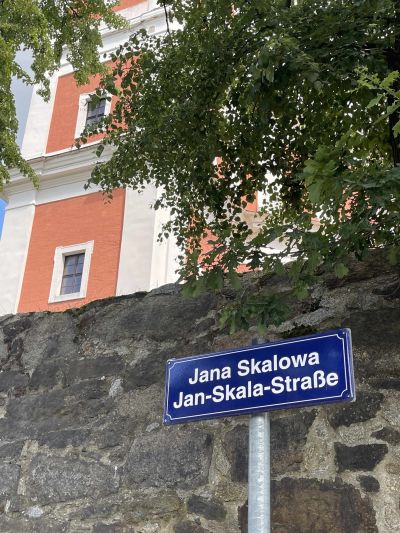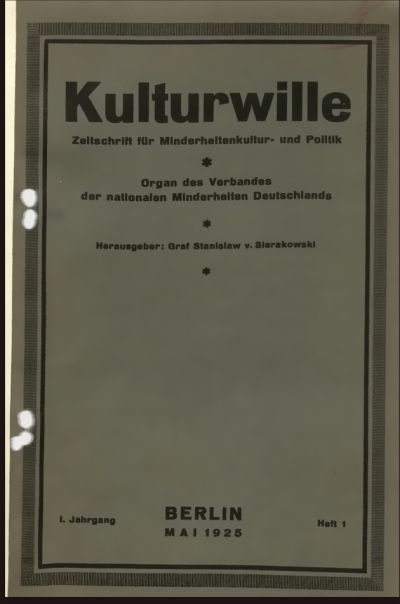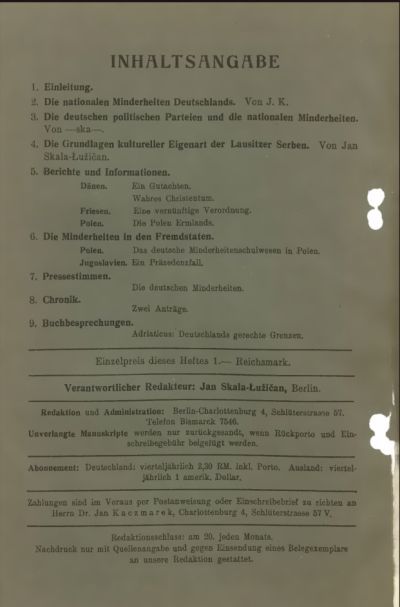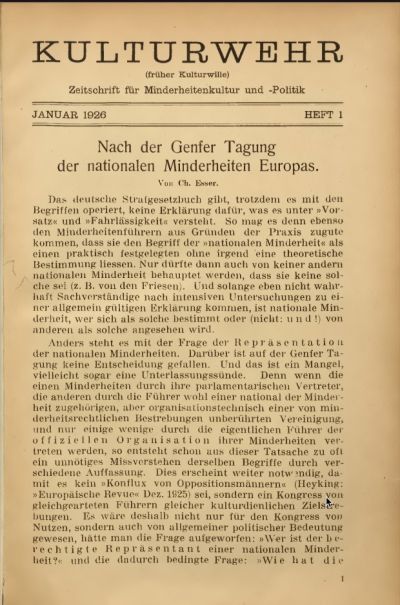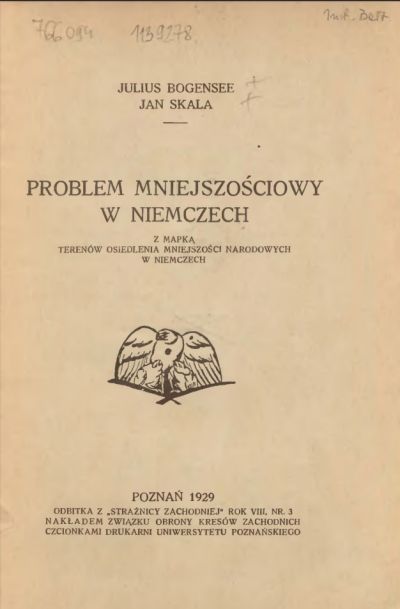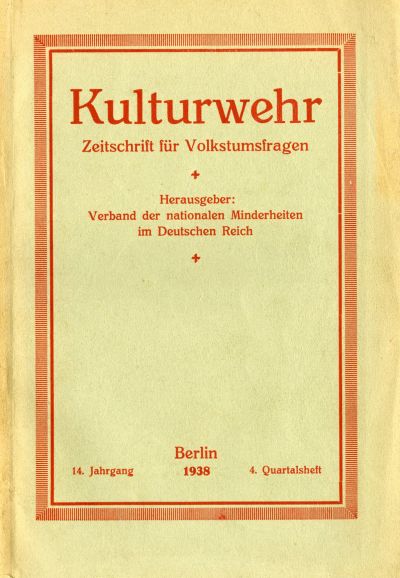Jan Skala (1889–1945). A close Sorbian associate of the Union of Poles in Germany
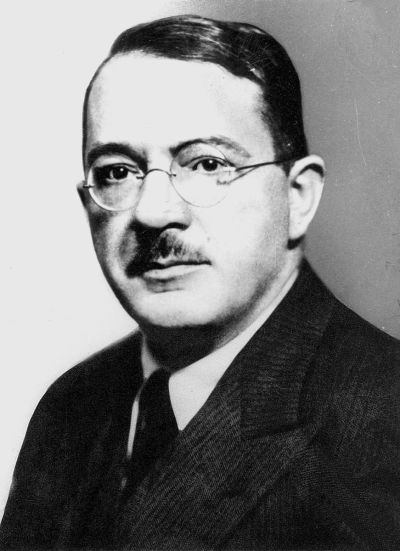
Jan Skala did not survive the fall of the Third Reich. Shortly before the fighting on the front reached the village, it was evacuated by the Nazis. However, Skala and several other villages chose to remain. On 22 January 1945, he was shot while attempting to protect his family and his neighbours from the Soviet soldiers who had occupied the village. He was buried in a mass grave in the cemetery in the neighbouring village of Włochy (Wallendorf) together with several others who were killed. His wife and daughter left Dziedzice for Germany at the end of 1945.
Thanks to the efforts of the Friends of Namysłów Homeland association (Verein der Namslauer Heimatfreunde) and the “Domowina” association of Lusatian Sorbs, Jan Skala has not been forgotten. In 1965, a bust of Skala by the Bautzen-based sculptor Rudolf Enderlein was unveiled in Namysłów, and the square on which it stands is also named after him. Thanks to the cooperation between the two organisations, a symbolic gravestone was erected in his honour at the cemetery in Włochy (his body has not yet been exhumed). In 2009, to mark the 120th birthday of Jan Skala, an academic conference, “Jan Skala (1889-1945) national activist, publicist and artist”, was held, and in Włochy, an information panel was attached to a column on the cemetery gate bearing the following words:
“Here lies Jan Skala, Sorbian national activist, publicist, politician, advocate of Polish-Sorbian cooperation, poet and prose writer.
Jan Skala was born on 17 June 1889 in Nebelschütz (Sorb. Njebjelčicy) in the Upper Lusatia region. In 1919, he was a co-founder of the Lusatian People’s Party. He was the editor of the “Sorbian Daily” (Sorb. “Serbski Dźenik”), “Sorbian News” (Sorb. “Serbske Nowiny”) and the “Prager Presse”. From 1925 to 1936, he was editor-in-chief of the theoretical-ideological organ of the Association of National Minorities in Germany, which first appeared under the title “Kulturwille” and later “Kulturwehr”. During this time, he helped create the ideological platform of this organisation, actively participated in the conferences of the European national minorities in Geneva, and worked in close cooperation with the Union of Poles in Germany. He made his debut as a writer in 1910 in the “Lausitz” (Sorb. “Łužica”) newspaper. In 1920, he published a volume of poems entitled “Crumbs” (Sorb. “Srjódki”). In 1923, a further volume of poems was published entitled “Sparks” (Sorb. “Škrě”). He also wrote the novella “The Old Šymko” (Sorb. “Stary Šymko”). This work was published for the first time in Polish translation in 1936. From 1933 onwards, he was the subject of intensified observation by the German authorities, who in 1936 withdrew his authorisation to work as a journalist. In 1938, he was arrested and spent eight months in a Nazi prison. In 1944, he moved to Erbenfeld (today: Dziedzice), and took up employment in Namslau (today: Namysłów). During this time, he made contact with the Home Army structures which operated in the Namysłów region. Tragically, he was killed at the hands of a soldier of the Red Army on 22 January 1945.
The memorial plaque was donated by the people of the community of Domaszowice Dziedzice in honour of the poet’s 120th birthday on 27 May 2009”.
Krzysztof Ruchniewicz, July 2023
Selected bibliography:
Dan Gawrecki: Jan Skala a Czesi. Przyczynek do biografii, https://www.prolusatia.pl/ksiaznica/artykuly/244-jan-skala-a-czesi-przyczynek-do-biografii.html (letzter Zugriff: 2.08.2023);
Leszek Kuberski: Zarys biografii politycznej, Opole 1993;
Michael Nuck: Jan Skala (Johann Skala), https://saebi.isgv.de/biografie/Johann_Skala_(1889-1945) (last accessed on 2.08.2023);
Dietrich Scholze-Šołta: Śmierć na Dolnym Śląsku. Tragizm serbołużyckiego pisarza Jana Skali (1889-1945), https://www.prolusatia.pl/ksiaznica/artykuly/245-mier-na-dolnym-lsku-tragizm-serbouyckiego-pisarza-jana-skali-1889-1945.html (last accessed on 2.08.2023).

